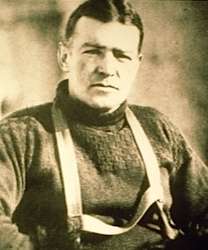
Shackleton’s Leadership Style
30th November 2015
Not to forget, it was a full one hundred years ago that Shackleton made a bid to cross the continent of Antarctica, from Weddell to Ross Sea, via the South Pole. It’s worth putting into context that at the time, expeditions often resulted in incidences of scurvy and starvation, accidents, crevasse falls, depression, madness, mutiny and even suicide. There was even the odd case of cannibalism!
And yet on Shackleton’s expedition, despite their obvious failure in their mission to cross Antarctica, and despite the fear of the unknown – would they ever make it home? – Shackleton’s men didn’t fall into collective depression as one might expect, but survived against the odds, and, reading their diaries, even appeared to be happy.
How on earth did Shackleton lead his men so successfully through disappointment, boredom, discomfort and fear?
Perhaps worth looking at the first stage first, when they were on the Endurance heading south and the ship was frozen in the ice ‘like an almond in a chocolate bar’.
1. Shackleton did not follow the protocol of his time, he was ahead of his time. Traditionally there would have been a strict hierarchy on the ship, and Shackleton broke this down by having everyone pitch in to do all the work on the ship. To the discomfort of some of the more educated class – at the start at least – he had all the men scrubbing the floors alongside one another, and taking scientific readings together. They took turns sailing, steering the ship, night watch, as well as maintaining the fires in the furnaces and taking meteorological readings. Shackleton mixed groups deliberately so that through time they were utterly at ease in one another’s company.
2. Shackleton had a cabin to himself but always made himself accessible to the crew and listened to their concerns.
3. He was a stickler for structure, setting clear parameters for work and play. On the whole the crew responded well to the comfortable daily routine; it made each feel he made a contribution, and was valued.
4. Shackleton was scrupulously even-handed; he never allowed a punishment to exceed a crime.
5. He never asked anyone to do work he wouldn’t do himself; he led by example.
6. He was a natural at the social side of things. He loved poetry, conversation, a singsong – and relaxed informally with the crew at meal times.
Shackleton was a thinker, no doubt, constantly planning and working through contingencies, but his most remarkable quality was his deep understanding and respect for his men.
His second-in-command, Frank Wild, said of him, he was ‘a Viking with a mother’s heart.’





